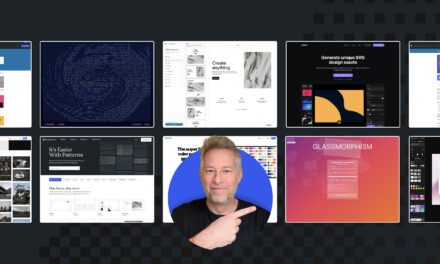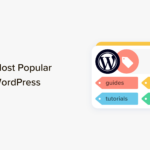The most strongly recommended practice for having readers confirm their subscription to your newsletter is for them to do so via email. This practice requires subscribers to not only confirm their subscription once but twice! This is a process known as double opt-in.
So why on earth would anyone require such a thing? Wouldn’t requiring more of your potential subscribers thin out your lead capture list? Not necessarily. In fact, there’s a lot of evidence that the double opt-in can be a good thing.
In fact, it’s not only a recommended practice… it’s the best practice you can abide by for your email subscriptions. Confused as to how this can be possible? Read on to get the low-down on this seemingly counterintuitive (yet very effective) practice.
Here’s what we’re going to cover today:
- Opt-in vs Double Opt-in
- The Double Opt-in Process
- Adding a Double Opt-in to WordPress
- More Double Opt-in Tips
Opt-in vs Double Opt-in
There are basically two types of opt-in: the single opt-in (which requires less work on the subscriber’s part) and the double opt-in (which requires extra steps).
Single opt-in only requires a single confirmation. Subscribers fill out your subscription form and hit the Subscribe button to confirm their subscription. That’s it. Done.

Double opt-in requires two different confirmations – one in the web-based subscription form and another in a link they receive in their email. This step is easy to forget or ignore and without it the reader doesn’t have a subscription to your content.
This process asks each new subscriber to fill out your signup form, and confirm subscription to your list via email. – MailChimp
Why would you want to require your subscribers to confirm their subscription twice when it might cause them to not subscribe at all? I mean, one confirmation is easier than two, right?

Let’s look at the double opt-in process and we’ll see the benefits it brings to you and your subscribers.
The Double Opt-in Process
The double opt-in process takes two steps for the reader to opt-in. For a newsletter subscription, this is completed in five steps overall. The process will look like this:
Step 1 – Signing Up. The reader fills out the subscription form and clicks on the Subscribe button. This is the first opt-in. Note – the single opt-in model ends here.
Step 2 – Thank You. The reader is taken to a thank you page where they are informed to check their email for a confirmation link and they should click on it to confirm their subscription. It could also include a note that shows what the email address of the newsletter is (so they know what they’re looking for) and to add it to their contacts, and a message to check their spam folder if the email doesn’t show up.
Step 3 – Email. The reader goes to their email and opens up the subscription confirmation email. This email should be labeled well so they know who it’s from and indicate they need to perform an action. The email itself gives the reader the information that they need to click on an included link or button to confirm their subscription. The reader clicks the confirmation link. This email could also either give them a link to download something (such as a free gift) or tell them they will get the download link when they confirm their subscription. This is the second opt-in.
Step 4 – Confirmation. The reader is taken to a page that confirms to them they have just subscribed to your newsletter. This could also be a page where they can download something for free or it could give them the information that the download link will be sent to them.
Step 5 – Welcome Email. The reader receives an email welcoming them to your email newsletter subscription. The link to their free gift could also be included in this email.
This process should be handled within your newsletter service. Whether you use a stand-alone newsletter service, a custom built service, or even your own software, just make sure it has the double opt-in feature.
Double opt-in can be used for several purposes including:
- Newsletter or email (this is the most common)
- Comments
- Free gift
- Membership
- Unlocking content
Why Use Double Opt-in
In case you need a few more concrete reasons to use the double opt-in model, we’ve put together this handy list to persuade you.
- It reduces spam. If everyone that sent emails used the double opt-in model, no one would get emails they didn’t ask for.
- It reduces robot activity. You might have limited seating available. You want to make sure that people who are signing up are real people and not some sort of robot or spam-bot. Since a spam-bot can’t complete the double opt-in process you are protected from spam-bot activity. Spam-bots hope you’ll see the email addresses and check out their spammy links. Silly spam-bot. Spam-bots are so dumb.
- It lets readers decide for themselves whether or not to sign up for your newsletter. If they only have to enter an email, then anyone can enter someone else’s email and sign people up that never intended to sign up. With a single opt-in, anyone can sign anyone up for anything. All they have to know is the email address. This is like signing up your frenemies to receive a set of encyclopedias, magazine subscriptions, or insurance. Think of it as a way to protect readers. Also, your list wouldn’t be worth much to you because they’re not your target audience. It’s also likely that you would be reported for spam.
- It helps you if you do get reported for spam. You have confirmation that they signed up on purpose. This helps for those (hopefully never) times when someone signs up and then reports your newsletters as spam because they forgot that they signed up (even though your email tells them they signed up and how to unsubscribe if they want). You have proof they opted into your newsletter.
- It reduces spam complaints. Too many spam complaints can get your domain name banned by ISP’s and placed on their email blacklist. You don’t want on this list. Once you’re on this list it’s extremely difficult to get your domain name removed from it. It can potentially be easier to just start over with a new domain. It’s difficult to reduce complaints to zero, but this can reduce them to a very few.
- It keeps potential subscribers from accidentally subscribing with old or incorrectly typed email addresses. This can potentially cause a high bounce rate and will reduce your open rate. This will completely throw off your analytics and uses your few empty subscription slots for non-existent subscribers. It ensures that email addresses are actually valid.
- It ensures that your newsletters go out to readers that actually want to hear from you. They are your target audience. You’ll be able to market to them more effectively because they’ve asked you to. This will increase your number of opens and your reader-engagement will be higher. They are more likely to share your email with others who will then become subscribers because they’ve already seen your content and have decided for themselves that they want to receive it too. This raises the quality of your email list because you can work your marketing mojo on them.
- It reduces your number of unsubscribers. There will always be someone that subscribes to get what you’re offering for free or in the spur of the moment and then later unsubscribe. There will always be subscribers that have changed their mind or weren’t as sure about your topic as they thought they were. You’ll always have unsubscribers. The double opt-in method will keep that number much lower because they have to go through extra steps to sign up in the first place. This will make them think about it one more time before they actually subscribe. Those are the subscribers you really want.
- It raises the value of your newsletter. You can charge for ads within your newsletter because your newsletter would be targeted to a specific market. Your advertisers would be more willing to pay higher rates and they would buy advertising space more often because they would get a better response. The number on the list is less relevant than the quality of the list. The number of double opt-in subscribers is more impressive to advertisers than the number of single opt-in subscribers.

Adding a Double Opt-in to WordPress
There are several ways to add a double opt-in. If you’re using a newsletter plugin, the plugin itself should have the feature. Here’s a look at a few plugins to add a double opt-in to various WordPress functions.
E-newsletter

WPMU DEV’s plugin e-newsletter provides double opt-in and includes an automatic welcome email and custom subscribe and unsubscribe pages.
It allows you to use the WordPress theme customizer to create your newsletter from within WordPress using one of seven built-in newsletter themes and gives you a live preview. You can save time and keep your design consistent by cloning previous emails. You can add and manage subscribers, create groups, send newsletters, and view statistics about your campaigns all from the dashboard. Emails can be personalized. You place the forms with a widget or shortcode.
Note: We no longer maintain or support the e-Newsletter plugin (see this post for more info: https://wpmudev.com/blog/wpmu-dev-legacy-plugins). You can, however, still, download, use, and even develop it further.
Newsletter

The Newsletter Plugin is the most popular free newsletter plugin for WordPress. It has both single and double opt-in. It is a complete newsletter system with unlimited subscribers and emails. You can use the built-in form or create your own form and place it within a page or use the subscription widget. Newsletters can be HTML or text. It provides statistics.
Email Subscribers

The free Email Subscribers plugin provides both single and double opt-in. It lets you send three different types of info to your subscribers:
- Send a notification when you post something new.
- Create HTML newsletters that you can manually send to subscribers.
- Automatically create and send a newsletter with your latest posts using a cron job.
You can add the subscription form to the sidebar using a widget, in a page or post using a shortcode, or within your theme file using PHP. It will send HTML or text.
Subscribe To Comments Reloaded

The Subscribe to Comments Reloaded plugin is based on the original Subscribe to Comments plugin and allows users to subscribe to comments through the double opt-in system.
They can subscribe and unsubscribe to specific posts. It includes a dashboard with tools to manage subscriptions, forms, and notifications. You can create your own management page using messages and options that you set.
Subscribe to Double-Opt-In Comments

The Subscribe to Double-Opt-In Comments plugin is also based on the original Subscribe to Comments plugin and adds double opt-in. It allows readers to receive notifications of new comments that are posted to an entry they subscribe to. It includes an option page where you can create an email message. You don’t have any control over subscriptions or any management features. The beauty of this plugin is in its simplicity.
More Double Opt-in Tips
In case you need some additional guidance on how to create and implement a double opt-in, here are a few parting takeaways:
- Make your form as simple as possible. If you don’t need the information then don’t make them type it in. You really only need two fields and one button:
- Name
- Email address
- Click to Subscribe
- Get their first name. This way your newsletter app can personalize the email by using their first name.
- Write a nice thank you message. Tell your subscribers that you appreciate them taking the time to subscribe.
- Give them something cool. A common practice is to give something away as an incentive to subscribe. This can be an e-book, list of tips, etc. For ebooks use PDF format (it’s very popular and it’s easy to design your document). Unlocking a free video is also popular. Don’t worry about trying to hide the document’s location too much. It’s true they might unsubscribe after getting their free gift, but it’s also true that they might not.
- Don’t drive them crazy trying to get them to subscribe. Once they know you have a newsletter, and especially after they’ve subscribed, if you keep pestering them they might go away.
- Make your forms, thank you page, email, and confirmation page clear and easy to understand. Avoid confusing language and keep it as simple and as smooth as possible. Keep them informed at every step so they don’t think your email or newsletter is spam. Make sure the “From” portion of the email is what they’re expecting to receive. For example, if they sign up for a newsletter for Best BBQ Recipes they won’t be looking for a confirmation email from LJT& Associates (I just made those up… no similarity to anything is intended).
- Remind them they subscribed to your newsletter. While pestering isn’t a good thing, the occasional message to remind someone they’ve subscribed to your newsletter is okay. In fact, it can (and often does) drive return visits to your site.
- Provide an easy way for them to unsubscribe. Believe me, I know you want to hang on to every single last one of your subscribers but holding on to them artificially by making it difficult for them to unsubscribe just isn’t playing fair. Offer a convenient and easy-to-use unsubscribe process. This way, at least if someone does unsubscribe, they won’t develop an unfavorable opinion of your site because you made the process difficult.
- Use an appropriate email address. Unless it’s part of your marketing strategy, sending newsletters from your personal Gmail address may not be appropriate. If you’re presenting yourself as a company (even if it’s only you working from your kitchen table), use a professional-looking email address with your own domain (e.g. [email protected]). If you need reliable email hosting, check out our free email hosting service for WPMU DEV members.
Wrapping Up
With the vast number of benefits it brings, there’s no good reason not to use double opt-in. You can avoid the many potential hazards of the single opt-in and you build higher quality and more valuable email list. It’s true that you might lose some potential subscribers because they won’t complete the confirmation process, but it’s worth it when you consider that you’re building a higher-quality list.
Tags:











